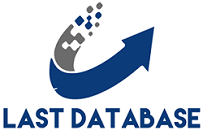Lead generation in the B2C (Business-to-Consumer) sector involves attracting and converting individual consumers rather than other businesses. The goal is to generate interest in a product or service and convert that interest into sales. Unlike B2B lead generation, B2C focuses more on emotional appeals, personal benefits, and direct communication with consumers.
Key Differences Between B2C and B2B Lead Generation
While both B2C and B2B aim to generate leads, there are significant differences:
Sales Cycle: B2C typically has shorter sales cycles compared to B2B.
Decision-Making Process: B2C decisions are often made by individuals rather than teams.
Marketing Channels: B2C relies more on direct and mass marketing channels like social media, email, and advertising.
Effective Lead Generation Strategies for B2C
1. Content Marketing
Creating engaging and relevant content is crucial for attracting potential leads in the B2C sector. High-quality content can build trust, educate consumers, and drive them towards making a purchase.
Blog Posts: Write articles that address common consumer questions and offer solutions.
Videos: Create video content that showcases your products, provides tutorials, and shares customer testimonials.
Infographics: Use infographics to present information in an easily digestible and visually appealing format.
2. Social Media Marketing
Social media platforms are powerful tools for B2C lead generation. They allow you to engage directly with your audience, share content, and run targeted ads.
Facebook: Use Facebook for targeted ads, creating engaging posts, and hosting contests or giveaways.
Instagram: Leverage Instagram’s visual platform to showcase your products and use influencers to reach a broader audience.
TikTok: Create short, engaging videos to capture the attention of younger audiences.
3. Search Engine Optimization (SEO)
SEO is essential for driving organic traffic to your website. By optimizing your site for search engines, you can attract consumers who are actively searching for products or services like yours.
Keyword Research: Identify and use keywords that your target audience is searching for.
On-Page SEO: Optimize your website’s content, meta tags, and images to improve your search engine rankings.
Local SEO: Optimize for local search results to attract nearby consumers.
4. Email Marketing
Email marketing is a direct and effective way to Phone Number Lists
nurture leads and drive sales. Personalized email campaigns can keep consumers engaged and informed about your products or promotions.
Newsletter Campaigns: Send regular newsletters with updates, promotions, and valuable content.
Abandoned Cart Emails: Remind customers of items they left in their shopping cart to encourage them to complete their purchase.
Personalized Recommendations: Use data to send personalized product recommendations based on past purchases or browsing behavior.
5. Pay-Per-Click (PPC) Advertising
PPC advertising allows you to target specific demographics and drive traffic to your website quickly. Platforms like Google Ads and Facebook Ads are highly effective for B2C lead generation.
Google Ads: Create targeted ad campaigns based on relevant keywords to capture consumers actively searching for products.
Facebook Ads: Use Facebook’s advanced targeting options to reach specific consumer segments.
Instagram Ads: Utilize Instagram ads to showcase your products visually to a targeted audience.
6. Influencer Marketing
Partnering with influencers can help you reach a larger audience and build credibility. Influencers can promote your products to their followers, driving traffic and generating leads.

Micro-Influencers: Collaborate with micro-influencers who have a smaller but highly engaged following.
Brand Ambassadors: Develop long-term partnerships with influencers to promote your brand consistently.
Sponsored Content: Pay influencers to create content featuring your products.
Measuring and Optimizing Lead Generation Efforts
To ensure the success of your lead generation strategies, it’s essential to measure and optimize your efforts continuously.
1. Track Key Metrics
Monitor metrics such as website traffic, conversion rates, cost per lead, and customer acquisition cost to evaluate the performance of your lead generation campaigns.
2. A/B Testing
Conduct A/B testing on various elements of your campaigns, such as email subject lines, ad copy, and landing page designs, to determine what resonates best with your audience.
3. Customer Feedback
Gather feedback from your customers to understand their needs and preferences. Use this feedback to refine your lead generation strategies and improve customer satisfaction.
Conclusion
Effective lead generation in the B2C sector requires a strategic approach that focuses on engaging content, targeted marketing, and personalized communication. By leveraging content marketing, social media, SEO, email marketing, PPC advertising, and influencer marketing, B2C businesses can attract and convert high-quality leads. Continuous measurement and optimization are essential to ensure that your lead generation efforts drive sustained growth and success for your business.


